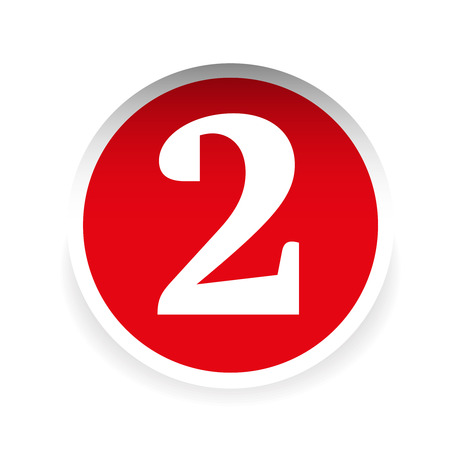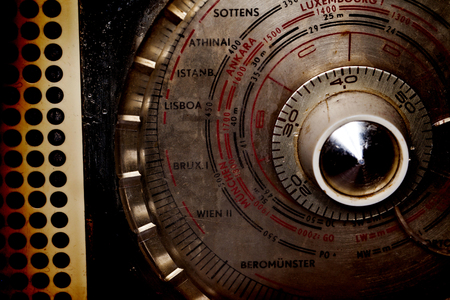1. Introduction to the Big Three in Astrology
Astrology has moved from the margins of popular culture into mainstream American conversations, especially among younger generations seeking new ways to understand themselves. At the heart of this astrological wave is the concept of the “Big Three”—your Sun sign, Moon sign, and Rising (or Ascendant) sign. These three elements are said to form a kind of cosmic blueprint for your personality, shaping how you express yourself, process emotions, and interact with the world.
What Are the Big Three?
The “Big Three” refers to the most important signs in your astrological birth chart. Each one plays a unique role:
| Sign | Represents | Influence on Personality |
|---|---|---|
| Sun Sign | Your core self and identity | How you see yourself; your ego and basic drives |
| Moon Sign | Your inner emotions and feelings | How you respond emotionally; your private self |
| Rising Sign (Ascendant) | Your outward style and first impression | How others see you; your social mask or vibe |
The Big Three in American Culture
In the United States, astrology has become more than just a newspaper horoscope. People now casually ask each other about their Big Three at parties or on dating apps as a way to get to know each other better. For many Americans, knowing your Sun, Moon, and Rising signs has become almost as common as sharing your favorite sports team or coffee order. This growing interest reflects a cultural shift toward exploring identity beyond traditional labels like career or family background.
Why Are People Talking About Their Big Three?
- Self-Discovery: Many Americans use astrology as a tool for personal growth and understanding their own behaviors.
- Social Connection: Sharing your Big Three can be an icebreaker or conversation starter, helping people bond over similarities or differences.
- Cultural Trend: With celebrities and influencers discussing their charts online, astrology has become part of everyday pop culture.
The Bottom Line: Your Cosmic Blueprint Matters
The Big Three offer a framework for thinking about who you are on multiple levels: public persona, emotional world, and core identity. As astrology becomes more woven into American cultural life, understanding these aspects is seen as both fun and meaningful—a way to unlock your unique cosmic blueprint.
2. Historical Perspective: Astrology’s Rise in American Popular Culture
Astrology hasn’t always been mainstream in the United States. In fact, its journey from a niche interest to a pop culture staple is pretty fascinating. Let’s take a look at how astrology—especially the “Big Three” (Sun, Moon, and Rising signs)—evolved from counterculture roots to become a familiar part of American self-exploration and entertainment.
Astrology in the Early Days
In early America, astrology was often lumped together with fortune-telling and wasn’t widely accepted by the mainstream. While some folks read horoscopes in newspapers, it was mostly seen as just for fun or even frowned upon by more traditional circles. Back then, very few people talked about their birth charts or knew much beyond their Sun sign.
The Counterculture Movement
The 1960s and 1970s brought big changes. With the rise of the counterculture movement, people started questioning traditional beliefs and exploring new ideas about identity and spirituality. Astrology became a symbol of individuality, freedom, and self-discovery—values that resonated with the era. The idea of having a unique cosmic blueprint based on your birth chart fit right in.
| Decade | Astrology’s Role | American Cultural Context |
|---|---|---|
| 1950s | Horoscopes in newspapers; seen as novelty | Conservative; emphasis on conformity |
| 1960s-70s | Countercultural tool for self-exploration | Rise of individualism, New Age movements |
| 1980s-90s | Continued underground popularity; more books and classes | Cultural diversity grows; focus on self-improvement |
| 2000s-present | Mainstream acceptance; social media boom for astrology content | Digital age, wellness trends, emphasis on personal identity |
The Big Three Go Mainstream
The concept of the Big Three—Sun, Moon, and Rising signs—gained traction as astrology moved online. Social media platforms like Instagram and TikTok have made it easy for Americans to share memes, daily horoscopes, and explanations about what each sign means. Suddenly, conversations about “What’s your Big Three?” became icebreakers at parties or even part of dating profiles.
Why Did Astrology Catch On?
Personalization: Americans love anything that helps them understand themselves better—and astrology offers a highly personalized view.
Entertainment: Birth charts are fun to explore alone or with friends. Comparing signs is a popular activity at gatherings.
Cultural Shifts: As American culture has embraced diversity and wellness trends, astrology feels inclusive and empowering.
The Cosmic Blueprint in Everyday Life
Today, astrology isn’t just about predicting the future—it’s about understanding yourself and others through your cosmic blueprint. The Big Three offer a simple way to dive into this world without needing to learn complex calculations. Whether you’re reading your daily horoscope on an app or chatting about your chart over coffee, astrology has become woven into the fabric of American pop culture—and it all started with a desire to explore what makes each person unique.

3. The Big Three as Tools for Self-Understanding
In American culture, astrology has become a popular tool for personal growth and self-discovery. Many people look to their “Big Three”—the Sun, Moon, and Rising signs—to make sense of who they are and how they fit into the world around them. These three signs each play a unique role in shaping an individual’s identity and can help explain why we act, feel, and present ourselves the way we do.
How Americans Use Their Big Three
Americans often use their Sun, Moon, and Rising signs as a kind of cosmic mirror, reflecting back different aspects of themselves. Here’s how each sign is commonly understood:
| Sign | Represents | Common Questions Explored |
|---|---|---|
| Sun Sign | Core identity, ego, and life purpose | “Who am I at my core?” “What drives me in life?” |
| Moon Sign | Emotions, inner self, subconscious needs | “How do I react emotionally?” “What do I need to feel secure?” |
| Rising Sign (Ascendant) | First impression, outward behavior, personal style | “How do others see me?” “How do I approach new situations?” |
The Role of Astrology in Personal Storytelling
For many Americans, exploring the Big Three isn’t just about reading horoscopes—it’s about weaving these insights into their own life stories. People often share their Sun, Moon, and Rising signs on social media bios or at parties as a way to express themselves and connect with others. Knowing your Big Three can provide language for understanding strengths and challenges, making it easier to talk about emotions or explain certain behaviors.
Everyday Examples of Self-Discovery
Imagine someone with a Gemini Sun (curious and adaptable), Cancer Moon (sensitive and nurturing), and Leo Rising (confident and expressive). This person might describe themselves as someone who loves learning new things (Gemini), deeply cares for friends and family (Cancer), and enjoys being the center of attention in social settings (Leo). By using their Big Three as guideposts, Americans can better understand their unique blend of traits—and even use this knowledge when making big decisions, like choosing a career path or navigating relationships.
4. Social Identity and the Big Three: Fostering Connection and Community
In today’s American culture, astrology—especially the Big Three (Sun, Moon, and Rising signs)—has become much more than a mystical interest. It’s now a fun and common way for people to express themselves, break the ice in new social situations, and build connections across diverse backgrounds. Whether at college dorms, coffee shops, dating apps, or even work happy hours, you’ll often hear someone ask, “What’s your sign?”—but increasingly, it’s about all three signs.
Astrology as a Social Language
Sharing the Big Three acts almost like a modern personality quiz. It gives people an easy way to talk about themselves and understand others without diving too deep into personal history right away. This shared language helps break down barriers and can make even strangers feel like they have something in common from the start.
Why Discussing the Big Three Matters in American Communities
| Situation | How the Big Three Helps |
|---|---|
| First Dates | Sparks conversation and lets people share their vibes or expectations quickly |
| New Friendships | Creates an instant talking point and helps people find similarities or fun differences |
| Workplace Teams | Encourages team bonding by exploring personalities in a lighthearted way |
| Diverse Communities | Bridges cultural gaps by focusing on universal themes of personality and emotion |
| Online Groups & Social Media | Makes it easy to form groups based on shared traits or interests connected to astrology signs |
The Big Three as Icebreakers and Identity Markers
Many Americans now introduce themselves with their Sun, Moon, and Rising signs on social media bios, dating profiles, or during group introductions. It’s not unusual to see Instagram stories or TikTok videos centered around “Big Three check-ins” or memes that poke fun at how different sign combos act. This trend supports individuality while also helping people feel part of a larger community.
Building Bonds Through Shared Cosmic Interests
The popularity of discussing the Big Three reflects America’s value of self-expression and belonging. Whether someone is deeply into astrology or just enjoys the social aspect, sharing these signs has become a playful yet meaningful tool for fostering connection in everyday American life.
5. Critiques and Future Perspectives: Navigating Skepticism and Continued Relevance
Astrology, especially the concept of the Big Three—your Sun, Moon, and Rising signs—has become a mainstream phenomenon in American culture. But not everyone is convinced of its legitimacy. Let’s look at some common criticisms, discuss its scientific standing, and consider why these cosmic signposts might stick around in our society.
Common Criticisms of Astrology in the U.S.
| Criticism | Explanation | Why People Still Follow |
|---|---|---|
| Lack of Scientific Evidence | There’s no concrete proof that birth charts predict personality or fate. | People enjoy self-reflection and find meaning beyond science. |
| Generalized Descriptions | Horoscopes and sign traits often sound vague or could apply to anyone. | The relatable language helps people feel understood and connected. |
| Cultural Stereotyping | Assigning traits by sign can lead to oversimplification or bias. | It’s often used playfully, not as a strict rulebook for judging others. |
The Scientific Perspective
American scientists typically view astrology as a pseudoscience because it lacks empirical support. Most research finds no correlation between zodiac signs and personality traits or life outcomes. However, many Americans see astrology less as a science and more as a tool for self-discovery, much like journaling or personality quizzes. This shift in perspective helps explain its lasting popularity—even when critics point out its flaws.
The Enduring Appeal of the Big Three in American Culture
Despite skepticism, the Big Three remain deeply woven into American cultural life. Here’s why:
- Community & Conversation: Discussing your Sun, Moon, and Rising is an instant icebreaker—from college campuses to online dating profiles.
- Personal Identity: The Big Three offer a fun framework for understanding yourself and others beyond traditional labels.
- Pop Culture Integration: From Instagram memes to celebrity interviews, astrology is everywhere, making it easy to participate regardless of belief level.
- Coping Mechanism: In uncertain times, looking to the stars offers comfort and a sense of control—even if it’s just for fun.
Big Three in Everyday American Life
| Setting | How It Shows Up | Cultural Impact |
|---|---|---|
| Social Media | Meme pages, daily horoscopes, compatibility posts | Sparks trends and viral conversations |
| Coffee Shops & Merch Stores | Zodiac-themed mugs, journals, apparel | Puts astrology into daily routines and style choices |
| Friendship & Dating Apps | User profiles featuring zodiac signs for compatibility searches | Adds a playful filter to relationship building |
| Mental Health & Self-Care Spaces | Zodiac-inspired affirmations or meditation guides | Makes self-care feel personal and accessible |


